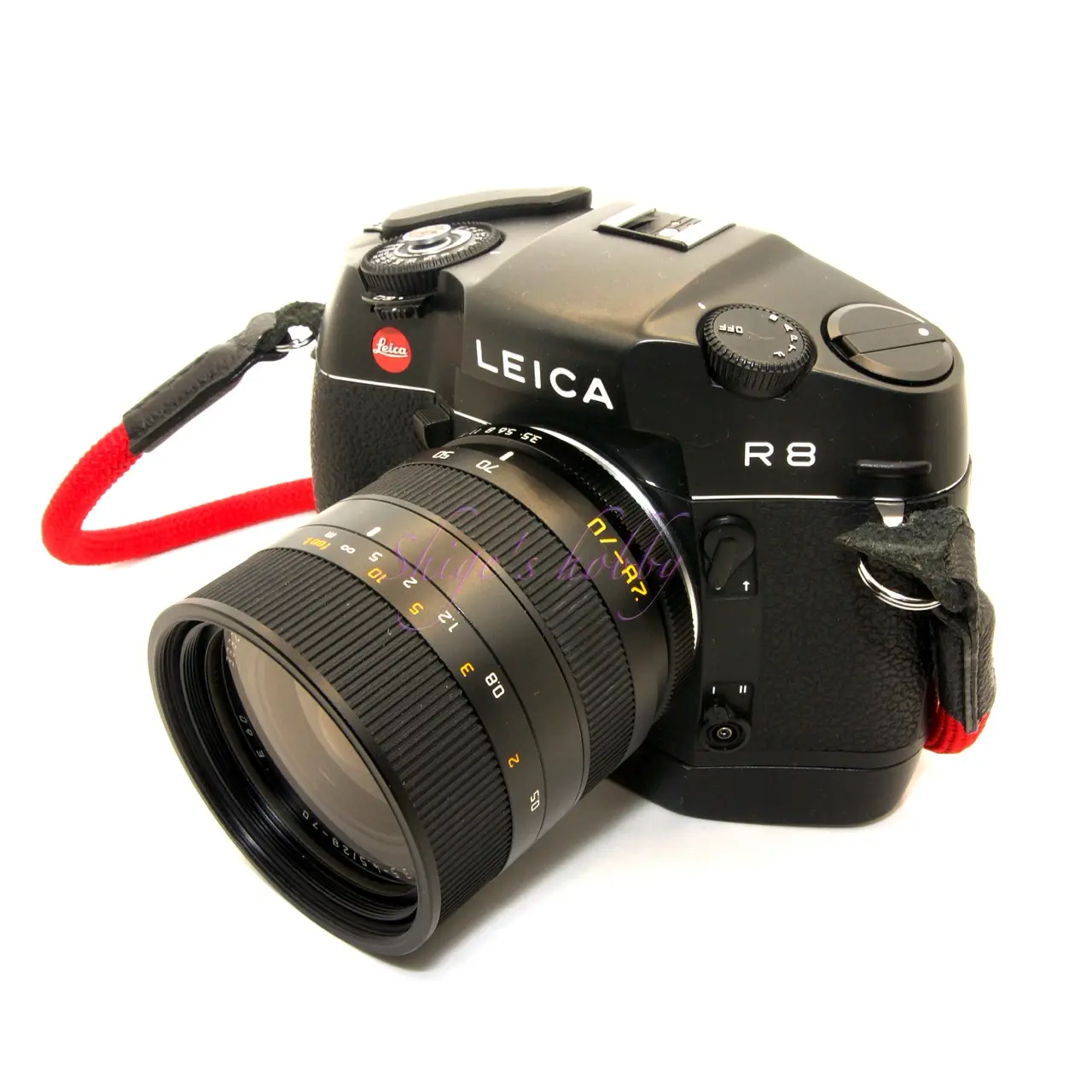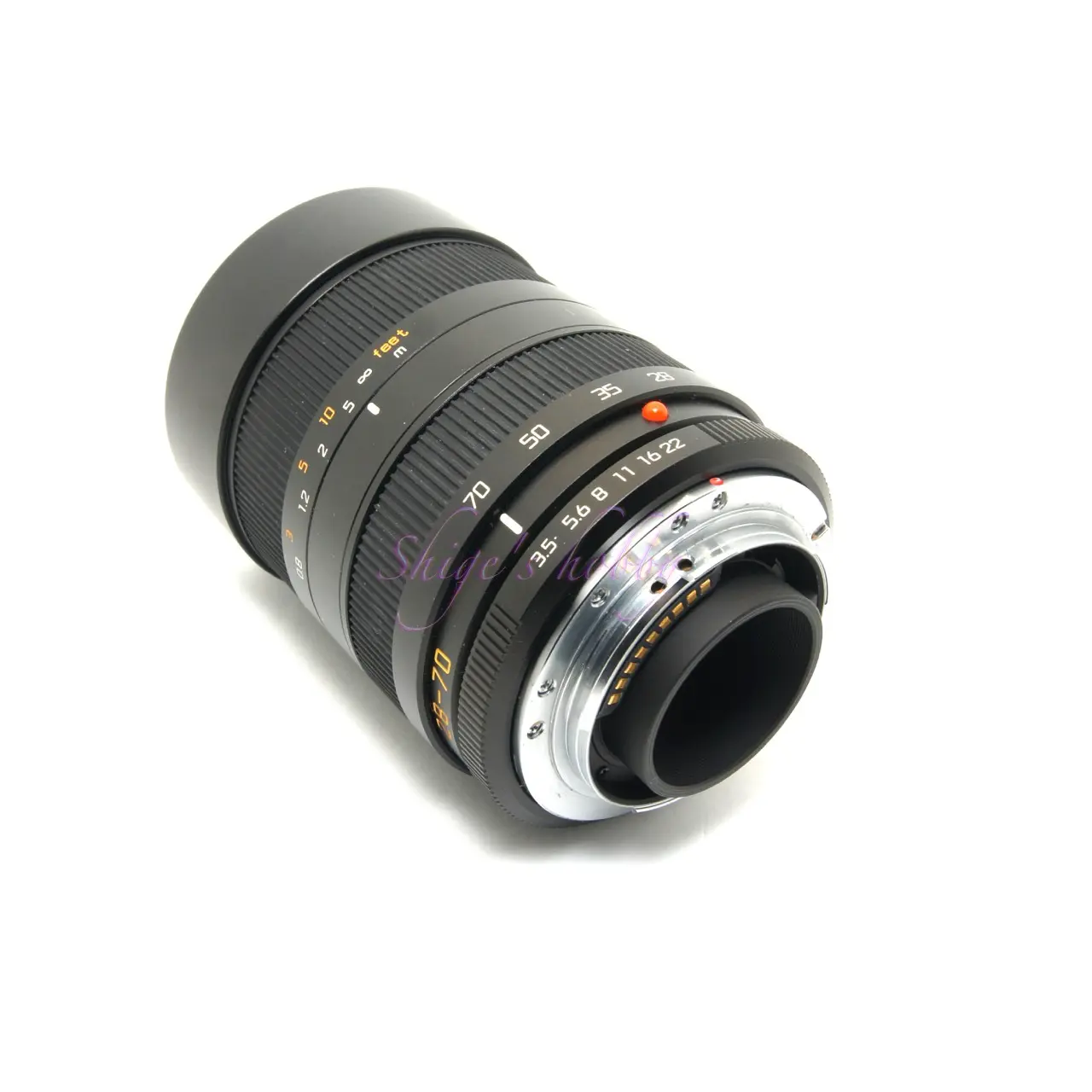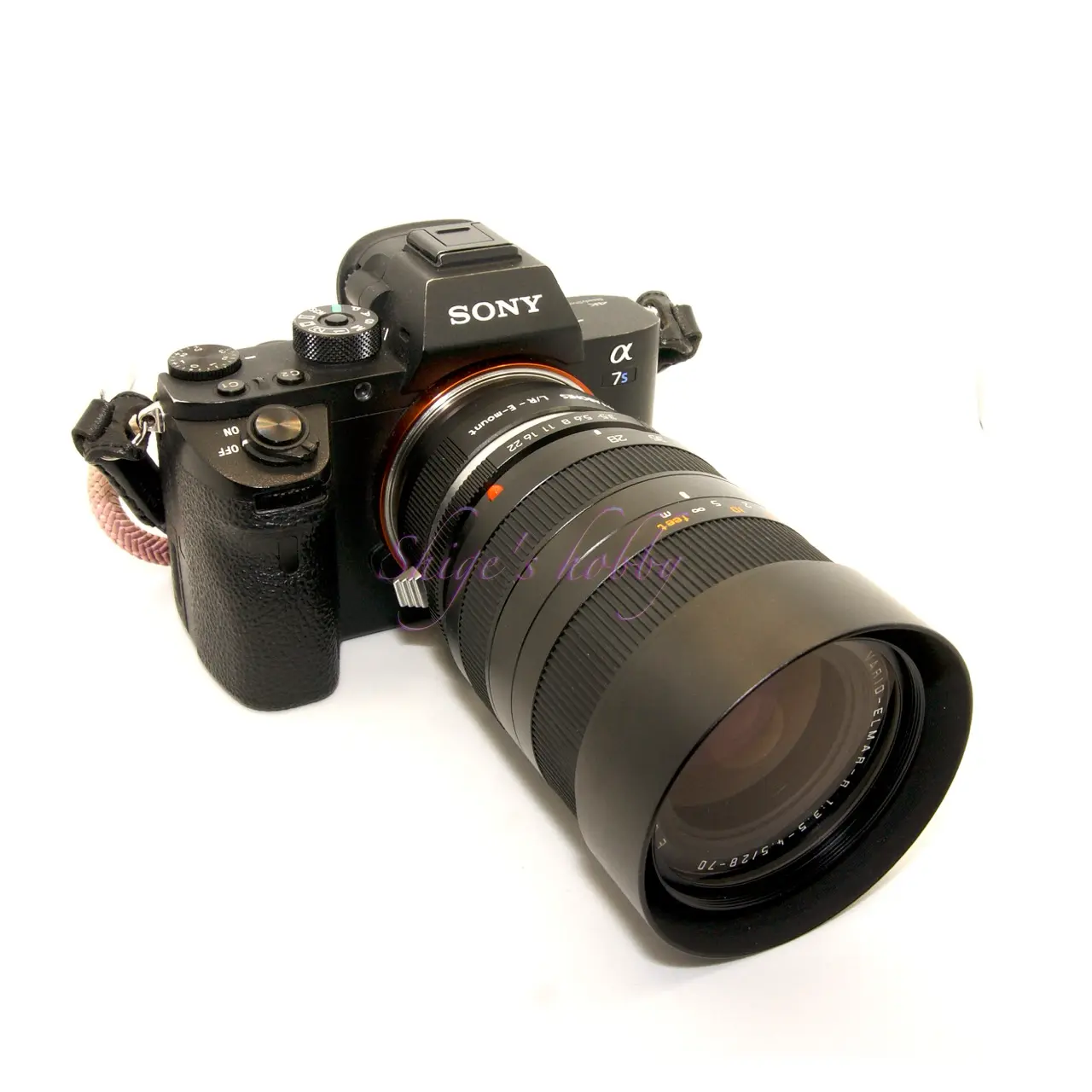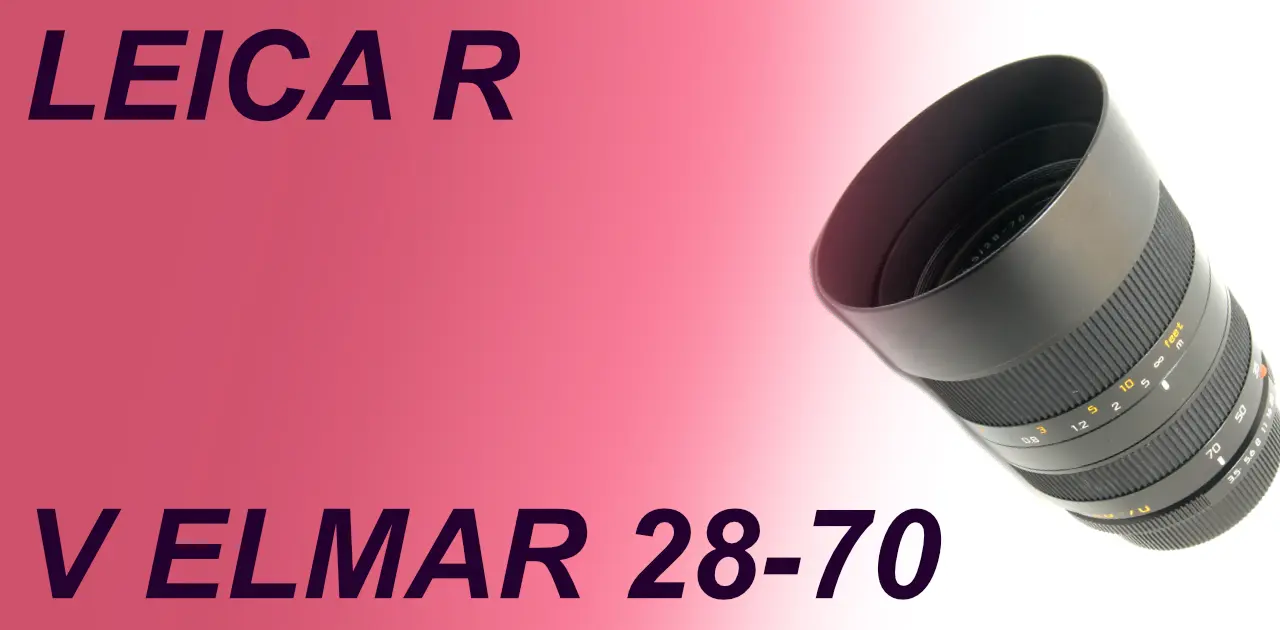Last updated on 2025-09-25
A review and photo examples of the Vario Elmar 28-70.
- Please see the disclaimer regarding advertising here.
- Italicized links in the text are advertisement links that take you to other sites.
Table of contents

Gallery
The following cameras were used to take the film photographic examples.
- LEICA R8 +KODAK GOLD 200 +DiMAGE Scan Multi PRO
- SONY A7SII
- HASSELBLAD X2D-100C
Review




1.Overview
There are early and late models of the VARIO ELMAR R 28-70mm, and there is no difference in the lens configuration or specifications, the only difference is the lens barrel design. Since they were manufactured at different years, the lens coating and internal mechanisms may have changed, but I have never used the early model, and I have no intention of disassembling and comparing the two, so the fine differences are unknown. It was often said in the past that this lens was designed and manufactured by Sigma in Japan.
The late VE has a focus ring at the front and a zoom ring at the front, and the focus ring rotates clockwise from infinity to the shortest setting, and the zoom ring rotates clockwise from the wide end 28mm to the tele end 70mm. Other Leica zoom lenses, such as the Vario-Elmar 21-35, have similar ring movements, so they are aligned with the style of rotating Leica zooms. By the way, the Sigma zoom ring rotates counterclockwise when moving from wide to tele, so it is reversed.
The overall length of the lens barrel changes with zooming and focusing, but when the hood is attached, there is no visible change, and the lens expands and contracts completely inside the hood. A lens with a similar mechanism is the Vario-Elmar 35-70 F4.
When the hood is attached, the appearance does not change, but in reality, the barrel is most extended at 28mm and most retracted at 70mm. This is a reasonable state for the effect of a hood fixed to the front of the lens. However, since the hood itself is not very long, the hood’s light blocking effect at 70mm is limited.
When using the Leica R-Adapter L (16076), a genuine Leica mount adapter, the LEICA SL typ601, LEICA T series, and LEICA CL, lens information can be transferred to the camera if the lens has a ROM terminal.
2.Usability
This article describes the later model VARIO ELMAR R 28-70mm (11364) ROM lens.
It is different from the earlier model VARIO ELMAR 28-70 F3.5-4.5 (11265) lens.
In terms of appearance, the lens barrel is quite large, and when attached to a Leica R8, it is almost well balanced, but when attached to a Sony α7 Sii, the lens is larger and looks like a higher-end constant F-number zoom lens.
In terms of color tone, when shooting with a Sony α7 Sii digital camera, the default color tone setting tends to be bland. This impression is the same when using negative film, and although KODAK negative film tends to have bland colors to begin with, when shooting with this lens, many of the photos were lacking in saturation overall, and I wanted to increase the saturation after scanning. The results may change if you use a film that has a slightly more flashy appearance like Fujifilm, or shoot with a slightly higher exposure. You can change the depiction to a certain extent by increasing the saturation with image correction software.
Regarding resolution, the image is not sharp and is a little blurry at all focal lengths when the aperture is open, so it is a lens that should be used at a certain degree of aperture. In particular, the image quality at the wide-angle and telephoto ends, which are often used with zoom lenses, is not so good, making it difficult to use. Also, it is not clear whether this is due to the cloudiness of the lens I own or the old lens itself, but there is a decrease in contrast and ghosting when shooting in backlight.
Regarding distortion correction, there is a certain amount of barrel distortion at 28mm, and the distortion can be confirmed when shooting linear buildings. It is almost not noticeable around 35mm, so it seems that the distortion correction at the wide-angle end is insufficient.
Regarding the minimum shooting distance, it is 50cm at all focal lengths, and at the telephoto end focal length of 70mm, it feels like you can get close enough, but when you actually use it, if you step in a little further, you will pass 50cm and the focus will not be corrected, which is a sad experience.
3.Summary
In conclusion, to sum up the VARIO ELMAR R 28-70mm late model (11364) ROM lens, it is inexpensive for a Leica lens because it is made in Japan. The image quality is nothing special, just like a budget zoom lens. If it were sold under a Japanese manufacturer’s name, it would probably cost less than 10,000 yen.
Additional information: Mount adapter
When shooting with a Canon EOS-1Ds MKIII, an error 20 (Err20) occurs every time a picture is taken. As far as I can tell from my own camera, this error occurs only with wide-angle lenses, such as ELMARIT-R 19mm-II, SUPER ANGULON-R 21mmF4, VARIO ELMAR-R 21-35mm, ELMARIT-R 28mm(I), ELMARIT-R 24mm, and SUMMILUX-R 35mm F1.4. I haven’t attached it to check, but it’s likely that both the SUPER ELMARIT and SUPER ELMAR 15mm lenses cannot be used.
When used with a HASSELBLAD X2D7, the image circle has more room than a 35mm full-frame sensor, and the ratio of usable image size is shown in the table below.
There is no vignetting effect at 50mm or more, and the image becomes more distorted the further out you go, but it can be used if you accept the purpose. At 28mm, the effect of vignetting can be seen, but overall it is clear that this is a lens with a wide image circle.
Some zoom lenses are designed with a generous image circle like this.
| Focal length | Percentage of usable images |
| 70mm | 100% |
| 50mm | 100% |
| 35mm | 95% |
| 28mm | 82% |
Specification
| Lens name | VARIO ELMAR | VARIO ELMAR(11364) | VARIO ELMAR | VARIO ELMAR |
| Constructor | LEICA | SIGMA | Kyocera? | Kyocera? |
| Focal length(mm) | 21-35 | 28-70 | 35-70 | 80-200 |
| Max aperture | 3.5-4 | 3.5-4.5 | 4 | ← |
| Min aperture | 22 | 22 | ← | ← |
| Leaf blade | 6 | ← | ← | ← |
| Lens Construction | 9 elements in 8 groups | 11 elements in 8 groups | 8 elements in 7 groups | 12 elements in 8 groups |
| Min distance(m) | 0.5 | ← | 0.5 (0.26 macro) | 1.1 |
| Lens length(mm) | 66.3 | 70 | 79 | 46 |
| Max diameter(mm) | 75 | 69 | 74 | 62.5 |
| Filter Size(mm) | 67 | 60 | 60 | 60 |
| Weight(g) | 500 | 452 | 505 | 1020 |
| Lens hood | Prastic crow 12438 | Screw type 12437 | Screw type 12437 | Build in |
| Production number*1 | 3,400(Until 2005) | 9,100(Until 2003) | 8,680(Until 2005) | 14,350(Until 2005) |
| Release date | 2001- | 1997- | 1996- | 1995- |
Reference links
Update history
- 2025.5.25
- 2024.8.28
- 2024.1.31
Affiliate links
- Please see the disclaimer regarding advertising here.
- Italicized links in the text are advertisement links that take you to other sites.
- Leica Lens・Ads by Amazon
- Leica Books・Ads by Amazon
- Classic Camera Specialty・Ads by Amazon

Amazon Prime Sale


Be First to Comment